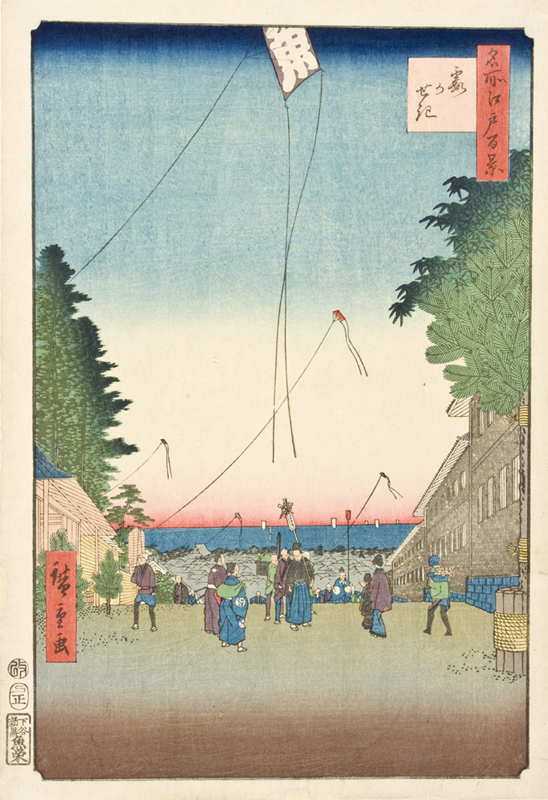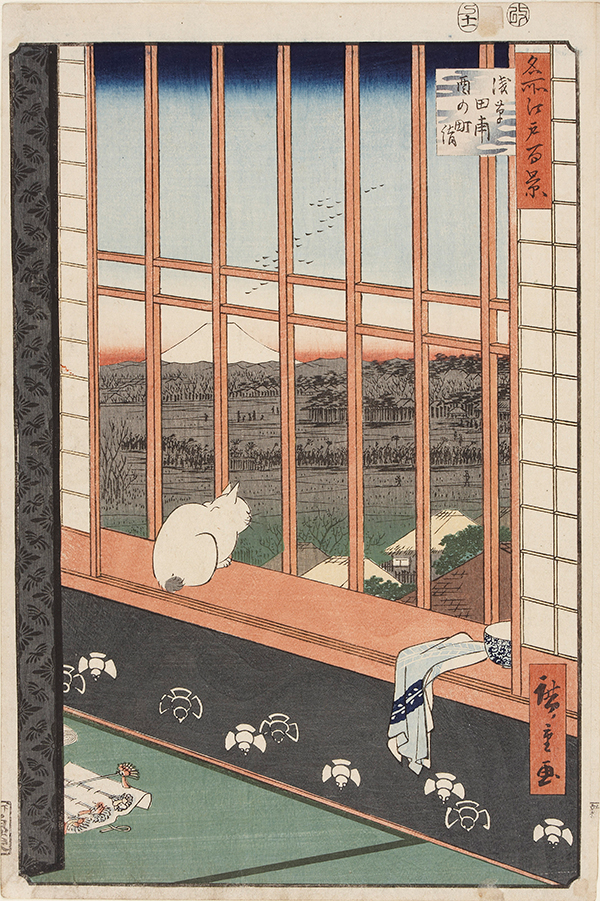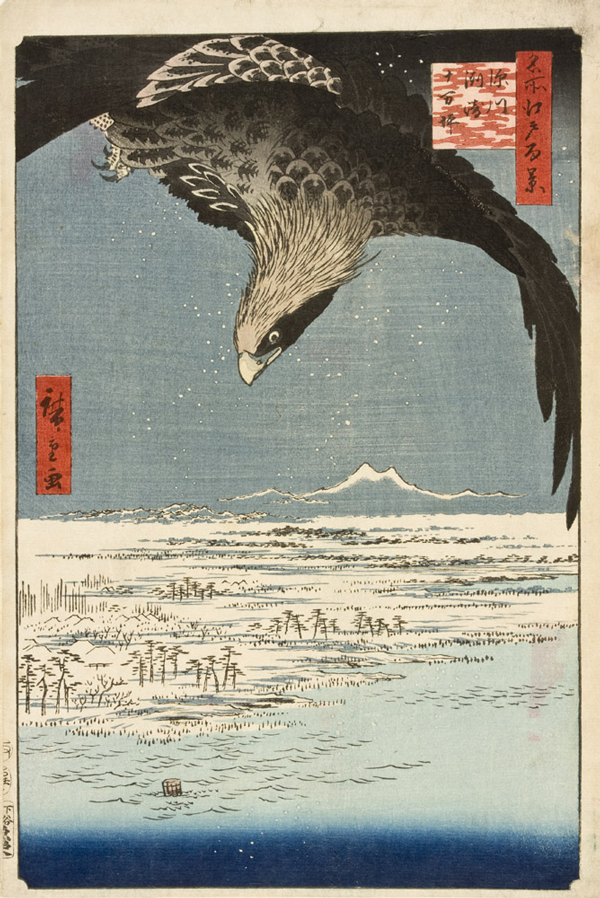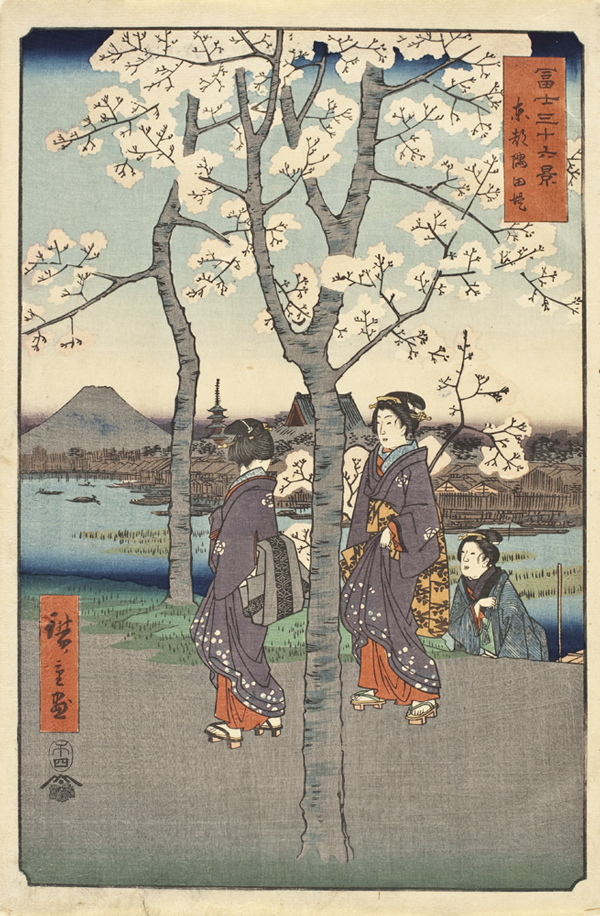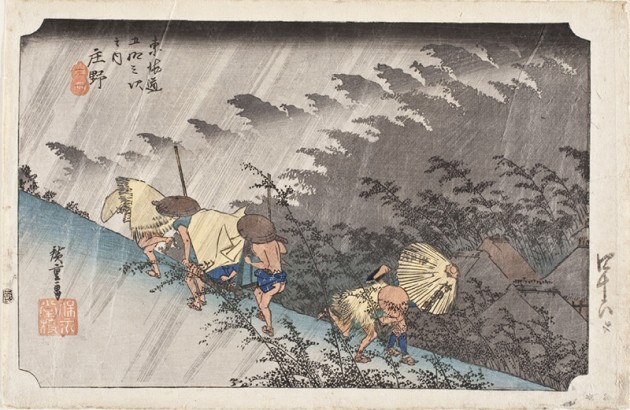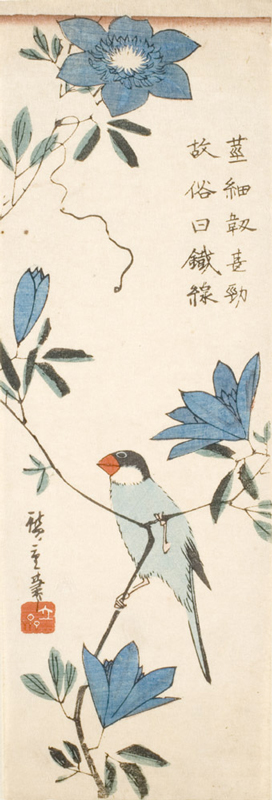Drawn from the Norton Simon Museum's extensive Japanese woodblock-print collection, Hiroshige: Visions of Japan features approximately 175 prints by Utagawa Hiroshige (1797–1858), one of the most celebrated and prolific artists of his time.
Hiroshige was born Andō Tokutarō in Edo (now known as Tokyo) in 1797. Around 1810, he was accepted as a student by Utagawa Toyohiro, a master artist of the Utagawa school of designers, print-makers and painters. Under Toyohiro's tutelage, the young artist honed his skills in the genre of ukiyo-e, or "pictures of the floating world." The school's successful apprentices formally adopted Utagawa as their surname and received new given names; by 1813 Andō Tokutarō had officially become Utagawa Hiroshige.
The landscape print, a late ukiyo-e development, was introduced by Katsushika Hokusai (1760–1849). Hiroshige was greatly influenced by Hokusai's famous series Thirty-Six Views of Mount Fuji (1823–32),depicting Japan's famous volcano, which was visible from Edo. Landscape prints-known as fūkeiga-became popular in Japan following a rise in leisure travel, a phenomenon that drove a demand for illustrated guidebooks, topographical views and souvenir pictures. SHOW MORE
Hiroshige's own revolutionary series, Fifty-Three Stations of the Tokaido Road (1833), presents scenic landscapes along the famous highway that linked Edo to Kyoto. The Tokaido Road followed the coastline from Edo, the administrative capital of the shogunate in the early 17th century, west to Kyoto, the imperial capital of Japan since the 8th century. Affording spectacular, picturesque views of the craggy coastline, the Tokaido was used by large retinues traveling back and forth from Edo, as well as merchants, religious pilgrims and tourists. Hiroshige's series, on display in the present exhibition, established his reputation as the foremost artist of the topographical landscape print.
Other highlights of the exhibition include more than 20 bird and flower prints. Exotic birds were popular in Edo, and many teahouses and public gardens boasted large aviaries. Hiroshige's lyrical depictions of birds with flowers or other natural elements are often paired with haikus or poems, as with Sunrise, Falcon on Pine Tree: "At sunrise on New Year's Day/ Throughout the nation/There are no boundaries."
Hiroshige produced his own version of Thirty-Six Views of Mount Fuji shortly before his untimely death on October 12, 1858. Unlike Hokusai's series, Hiroshige's views of Mount Fuji from the surrounding countryside are vertical; this provided the artist with a new orientation and perspective with which to present his unique vision. In the evening scene Fuji from the Sumida Embankment, the volcano, off in the distance, is in shadow. A group of three geisha, visually interrupted by a tall cherry tree, have disembarked from their pleasure boat to enjoy the spring blossoms.
Hiroshige's last great series, One Hundred Famous Views of Edo, is a tribute to his home city. At first glance, the interior scene Asakusa Ricefields and Torinomachi Festival appears to be a fairly simple composition of a white cat sitting on a window ledge. In the distance, a large procession has congregated to celebrate Torinomachi, the Festival of the Cock, a time when owners of entertainment venues such as restaurants, tea houses and brothels prayed for prosperity. In fact, Hiroshige has provided this bird's-eye view of the festival from a room in a brothel. A ceramic water bowl and a towel rest casually on the window ledge, and a set of rake-shaped hairpins lay on the floor, a gift from a man to his lover that implies "raking in" money in the coming year. In these dramatic compositions, Hiroshige manipulates the essence of a scene by offering an insider's view of the great city he called home. SHOW LESS

